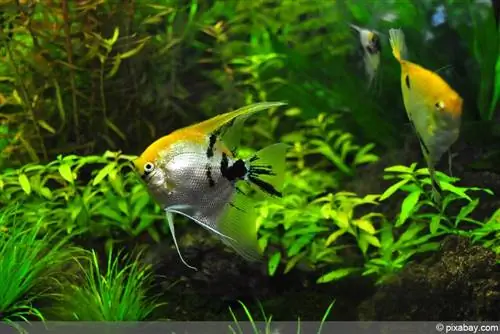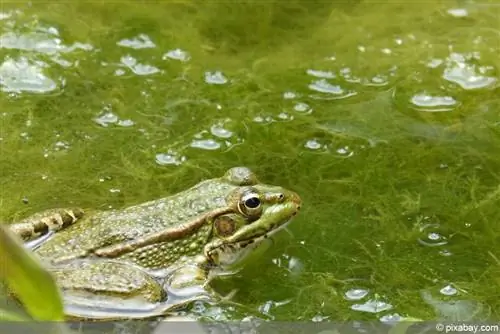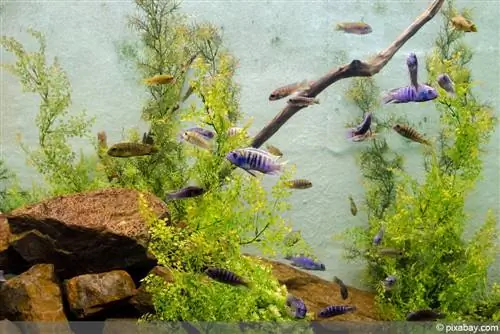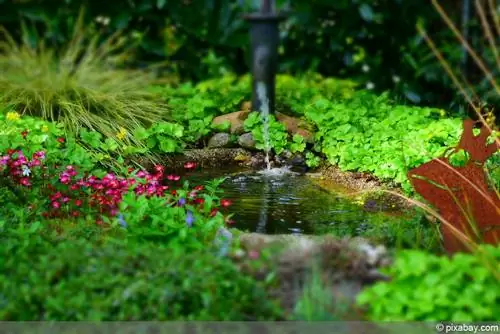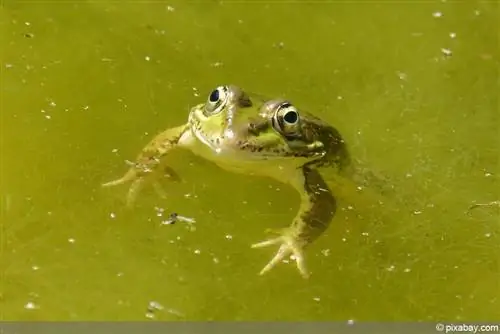- Author admin [email protected].
- Public 2023-12-17 03:39.
- Last modified 2025-01-24 12:45.
Thread algae are widespread in aquariums and can reproduce en masse. If excessive growth occurs, these aquatic plants quickly become an undesirable pest. In the aquarium, filamentous algae often develop where too much light hits the water surface and when there are too many nutrients in the water. However, with the right countermeasures, further spread can be prevented sustainably.
General information
Algae are among the oldest aquatic plants on earth, meaning that different varieties have developed over time and are found in all bodies of water. That's why it's practically impossible to get the aquarium completely free of algae. To a certain extent, filamentous algae are useful and serve as a food source for the aquarium's inhabitants. Under optimal conditions, filamentous algae can multiply extremely rapidly in the aquarium and have a very visually disturbing effect. In addition, these aquatic plants form clumps that can lead to clogged filter systems. In addition, small fish and other microorganisms can get caught in these clumped areas and then die.
- Thread algae are undemanding and easy to care for
- Are colored bright green
- Forms threads up to 20 cm long
- Are stretched out by the water current
- Often grow in the form of weedy spider webs
- Over time, they form dense and extensive carpets made of fiber material
- Also often appear as small, green cotton balls
- Some are only short-threaded with lengths up to 5 cm, in tufts and fur-like
- Usually formed in clear water
- Prefer alkaline pH values in the water
Causes & Symptoms
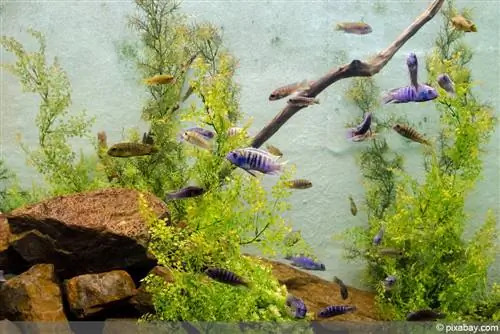
There are various causes for excessive growth of thread algae. These appear quite often in the initial period of use of an aquarium because the water chemistry has not yet developed optimally. In addition, this type of algae has enough space to spread in the early days if no other aquatic plants have yet been established. Furthermore, incorrect nitrate levels and an imbalance in nutrients accelerate the growth of invasive filamentous algae. The lighting conditions are also often the trigger for excessive growth of algae. String algae often settle on decorative objects and prefer places with a steady water flow, which is why they are often found at the water filter outlet.
- Too few aquatic plants in the aquarium
- Too many nutrients in the water, caused by too much fish food
- Too little or too much carbon dioxide in the water
- Nitrates levels too low or too high
- Too few residents, lack of fish and invertebrates
- Too many inhabitants also leads to an imbalance in the aquarium
- Too strong lighting with lighting times that are too long
- Intense sunlight through window onto the aquarium
- Missing or faulty filter systems
- Aquarium too small with too little water volume
Countermeasures
A quick and practical measure to remove thread algae is manual fishing. This should not be done with your hands to avoid unnecessarily contaminating the water. It is better to have previously cleaned objects on which the thread algae stick and can be easily fished out. To avoid an imbalance in the nutrients in the aquarium, the fish living in it should not be fed too much. Determining the water quality is a great help in combating the causes. This value can be determined using a strip test or an electronic measuring device, both of which are available from specialist retailers. If the water in the pool has been tested, a water change is usually necessary.
- Fishing thread algae mechanically
- Wooden skewers or thin bottle brushes for winding are helpful
- Scrubbing stones and decorative objects with a brush
- Remove any remaining algae residue
- Have at least one food-free day per week
- Avoid too hard and alkaline water
- Use collected rainwater instead of tap water
- Planting an aquarium correctly
- Do not plant slow-growing aquatic plants
- Use algae-eating fish and invertebrates as residents
- Compensate excessively high CO2 levels by increasing oxygen supply
- Water purified by osmosis filters has a positive effect on nitrate levels
Water change
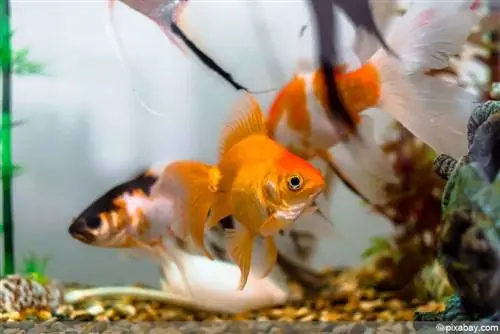
Regular water changes are not only mandatory for destroying algae, but also important for the ecological balance in the aquarium. During this process, not all of the water should be replaced, but only a certain percentage of the old water supply should be replaced with fresh water. In this way, the natural water chemistry in the pool is maintained.
- Replace 30 percent of the old water once a week
- If the infestation is extremely severe, change the water 2 to 3 times a week
- Ideally use water filtered by osmosis
- Tap water often has the wrong pH value
- Test pH before use
- Pre-treat water accordingly
Change in lighting conditions
If too much light falls on the aquarium, both the water temperatures and the chemical composition of the water change. That's why it's important to provide adequate shade, especially during midday heat in summer.
- Locations directly by the window are not ideal in the warm months
- In summer, place the aquarium in a slightly darker place
- Provide shade during the midday heat with roller blinds or blinds
- Do not set the lighting in the pool too high or leave it on for too long
Branch of the willow tree
An effective and simple measure for combating filamentous algae are branches of the willow tree. These release certain chemical substances into the water and in this way prevent the invasive aquatic plants from spreading further.
- Acetylsalicylic acid from the branches stops the growth of the algae
- Break off a few branches from the willow tree
- Remove all leaves first
- Place branches in several locations in the aquarium
Natural predators
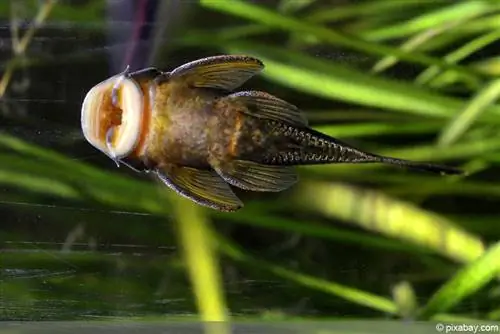
Certain aquarium inhabitants that feed on the filamentous algae can be used as an animal countermeasure. These include, above all, the voracious snails. However, many aquarium owners have certain prejudices about snails and fear that they will eat not only the filamentous algae, but also other useful aquatic plants. These fears are completely unfounded, as most species of snails are completely unable to do this because their mouthparts are too soft. The snails listed below only eat rotten plant matter, soft filamentous algae and leftover food that was intended for the fish. This way the snails maintain a he althy balance in the tank.
- Marshorn snails, tower snails, blue and gold apple snails are ideal
- Dwarf shrimps are also constantly used to destroy algae
- 30 pieces are suitable for a 300 liter pool
- Tetras, flag cichlids, Siamese mullets and plecos also eat algae
- Even densely overgrown areas are eaten clean again
- Aquarium becomes naturally algae-free
Algae killer
When algae infestation becomes excessive, many aquarium owners resort to chemical agents. However, these should only be used in absolute emergencies, as this will significantly disrupt the ecological balance. The stronger the agents are and the faster they work, the greater the danger to the other aquatic plants and the inhabitants of the pool. For these reasons, biological agents are preferred.
- Chemical agents kill filamentous algae quickly
- Water becomes clean, but there is an imbalance in the pool
- Organic products on a natural basis are better
- Thread algae stop and AlguMin are effective
- Fermented grains are also organically acceptable
- Algae killers based on fruit acids are questionable
- Citric acid destroys the cell structure of the algae and leads to their death
- But then the acid becomes fertilizer and the phosphorus content increases
- The filamentous algae then grow stronger than before
- Gills of some types of fish are damaged by fruit acids

